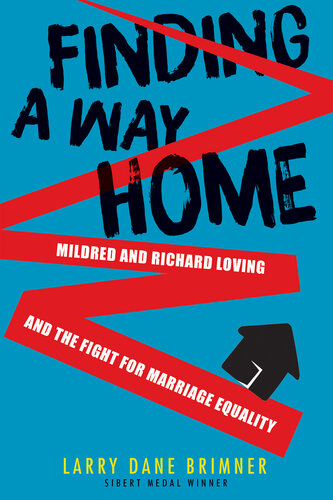
Finding a Way Home
Mildred and Richard Loving and the Fight for Marriage Equality
فرمت کتاب
ebook
تاریخ انتشار
2020
Lexile Score
1260
Reading Level
9-12
نویسنده
Larry Dane Brimnerشابک
9781635924503
کتاب های مرتبط
- اطلاعات
- نقد و بررسی
- دیدگاه کاربران
نقد و بررسی

September 1, 2020
An overview of the landmark 1967 case of Loving v. Virginia that legalized interracial marriage in the United States. Richard and Mildred Loving didn't set out to change marriage laws. Richard was White and Mildred was Black and Native American, and the young couple only wanted to live together as husband and wife. Married in Washington, D.C., in 1958, the newlyweds couldn't cohabitate in their home state of Virginia because interracial marriage was still illegal there. What followed was almost a decade of arrests, legal battles, and separation until their case eventually made its way to the Supreme Court. Brimner presents the facts in no-nonsense prose while providing context for the couple's plight: The history of segregation, the impact of the civil rights movement, and background on the judicial system are woven throughout. Brimner presents the debate about whether Mildred was multiracial or only Native American without drawing a definite conclusion. The concluding chapters show how the Loving case had a direct impact on the legalization of same-sex marriage, bringing home the lasting effect of this historic Supreme Court decision. This thoroughly researched, attractively designed work is rich with primary sources, making history tangible. The placement and size of the photos, including intimate family shots, increase the narrative's appeal and add momentum to every page turn. Brimner adds another strong text to his growing oeuvre of social justice-themed informational texts. (author's note, bibliography, source notes, index, picture credits) (Nonfiction. 12-18)
COPYRIGHT(2020) Kirkus Reviews, ALL RIGHTS RESERVED.

November 1, 2020
Gr 7 Up-This effective account of the Loving v. Virginia case examines the legal process behind the 1967 landmark U.S. Supreme Court decision, which ruled that laws banning interracial marriage were unconstitutional. In July of 1958, Mildred and Richard Loving were arrested in their home in the middle of the night for "unlawful cohabitation." Although the couple had married in Washington, DC, the state of Virginia did not recognize their union. When a judge banished the couple from living together in Virginia, they were forced to move to DC, sneaking back to Virginia to visit family and friends. Mildred eventually contacted a lawyer at the American Civil Liberties Union and was connected with Bernard S. Cohen, who took on the case. Cohen hoped to overturn laws that he felt were "relics of slavery." Cohen teamed up with another lawyer, Philip Hirschkop. They took the case to the Supreme Court in 1967, where they argued for equal protection under the 14th Amendment for all citizens, and asserted that the Jim Crow marriage laws were meant to keep non-white people as second-class citizens. Brimner details the legal arguments on both sides. A chapter titled "After Loving" describes the fight for marriage equality and how the gay community often drew on the Loving case when forming their legal strategies. High-quality photographs of primary sources and the featured individuals are included. VERDICT Brimner provides an accessible, succinct introduction to the legal arguments and issues of Loving v. Virginia. Recommended for all middle and high school collections.-Kristy Pasquariello, Westwood P.L., MA
Copyright 2020 School Library Journal, LLC Used with permission.

November 1, 2020
Grades 7-10 *Starred Review* In 1958, Mildred Jeter and Richard Loving went to Washington, D.C., to be married and then returned to Virginia to raise a family together. Six weeks later, police stormed into their bedroom at 2 a.m., arrested them, and jailed them for violating a state law that prohibited interracial marriage. At that time, similar statutes existed in 24 of the 48 states. The Lovings moved to Washington, but, longing to live among family and friends, they risked imprisonment by quietly moving back to Virginia. Meanwhile, the ACLU took their case to court, and in 1967, the Supreme Court ruled unanimously against raced-based marriage laws. As the book's final chapter relates, in 2015, the Supreme Court affirmed the right of same-sex couples to marry as well. Well researched and written as a clear, cohesive narrative, the book portrays the Lovings as a quiet couple who had grown up in a small, racially mixed community and simply wanted to be left alone. Quotes from the Lovings, their attorneys, and court proceedings are used judiciously, while large, well-captioned photos of people and documents bring the drama more sharply into focus. A concise, well-organized account of the landmark Loving v. Virginia case, its significance, and the people at the heart of the story.
COPYRIGHT(2020) Booklist, ALL RIGHTS RESERVED.

























دیدگاه کاربران